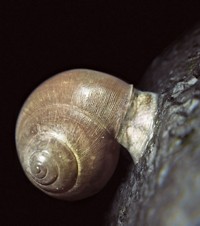Advertisement
Grab your lab coat. Let's get started
Welcome!
Welcome!
Create an account below to get 6 C&EN articles per month, receive newsletters and more - all free.
It seems this is your first time logging in online. Please enter the following information to continue.
As an ACS member you automatically get access to this site. All we need is few more details to create your reading experience.
Not you? Sign in with a different account.
Not you? Sign in with a different account.
ERROR 1
ERROR 1
ERROR 2
ERROR 2
ERROR 2
ERROR 2
ERROR 2
Password and Confirm password must match.
If you have an ACS member number, please enter it here so we can link this account to your membership. (optional)
ERROR 2
ACS values your privacy. By submitting your information, you are gaining access to C&EN and subscribing to our weekly newsletter. We use the information you provide to make your reading experience better, and we will never sell your data to third party members.
Materials
Two-faced fabric separates oil from emulsions
Cotton coated with cleverly designed polymer could find use cleaning up oil spills
by Bethany Halford
November 14, 2016
| A version of this story appeared in
Volume 94, Issue 45
A new polymer-coated fabric could make it easier to separate troublesome emulsions, such as those that can occur during industrial-scale syntheses of organic chemicals or when oil is accidentally released into waterways. The material, developed by Guojun Liu, Zijie Wang, and Shuaishuai Huang of Queen’s University, in Ontario, is known as a Janus fabric because, like its namesake Roman god with two faces, it has two sides, each with a different property—one hydrophilic and one hydrophobic. The new Janus fabric is made by coating cotton with a block copolymer containing hydrophobic poly(dimethylsiloxane), known as PDMS, along with hydrophilic poly(N,N-dimethylaminoethyl methacrylate), known as PDMAEMA (Angew. Chem. Int. Ed. 2016, DOI: 10.1002/anie.201607581). In air, PDMS orients to the surface of the fabric. But when the fabric is exposed to an emulsion, the material acquires its Janus nature, with the PDMAEMA portion of the polymer migrating toward the emulsion and the PDMS moving to the opposite side of the fabric. Oil droplets from the emulsion start aggregating in the presence of the PDMAEMA and then move to the hydrophobic PDMS side. As such, the fabric serves two functions: It de-emulsifies and separates the oil.





Join the conversation
Contact the reporter
Submit a Letter to the Editor for publication
Engage with us on Twitter